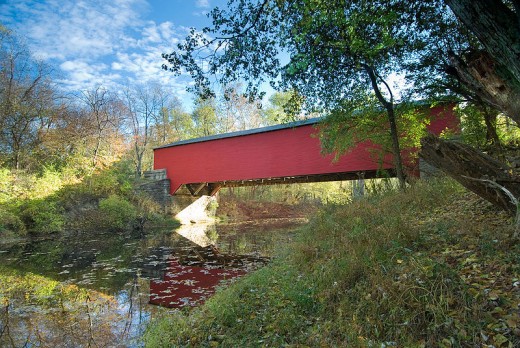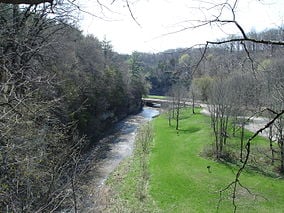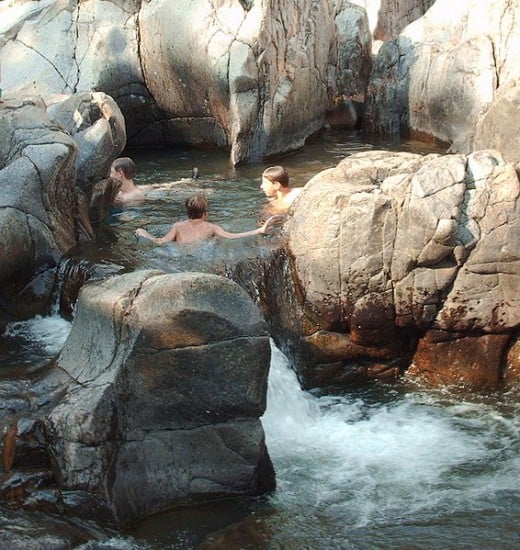Midwest: Ten Great State Parks










Hocking Hills State Park, Ohio. In south central Ohio Hocking Hills State Park preserves some unique geological features that are atypical of theMidwest. The state park preserves cliffs, waterfalls, potholes, caves, hollows, and creeks, and a beautiful sylvan setting about 45 miles southeast ofColumbus. The park is made up of ‘units’ that feature a different geological feature and totals 2,356 acres. The Cantwell Cliff unit features a gorge that opens into a hollow. The Rock House unit includes sandstone cliffs with rocky shelters. Conkles Hollow, Old Man’s Cave, Cedar Falls, and the Ash Cave units round off an impressive list of sites worth seeing and each is accessible by trails with varying degrees of difficulty but none more than 2.5 miles in length. The park was designated in 1924.
Brown County State Park, Indiana. Indiana’s largest state park was established in 1929 and is a crown jewel of the state’s publicly owned parks. Located in the scenic and hilly southern part of the Hoosier State, Brown County State Park is also popular and saw more than 1 million visitors in 2008. Covering 15,776 acres the park preserves the Knobstone Escarpment region. These airy heights provide tremendous views in what is otherwise considered a tedious Midwestern landscape. Weed Patch Hill (1056’) has a lookout tower and many visitors come in the fall to view the changing foliage. Hiking and mountain biking are favorite activities throughout the year.
Apple River Canyon State Park, Illinois. Unbeknown to many is the hill country of the northwest corner ofIllinois. Among these hills is a beautiful state park that features a limestone canyon that seems misplaced inIllinois. While the park only covers 297 acres it preserves a beautiful sandstone canyon along the Apple River in the Driftless Area (an area left untouched by the glaciers of the last ice age). The steep riverbanks and cliffs are anchored by a mix of white pines and hardwoods. Nearby is the state’s highpoint, Charles Mound (1,235’) and the historic town of Galena.
Pilot Knob State Park, Iowa. The 700 acre Pilot Knob State Park has two unique natural features that make it a worth a visit. The eponymous park is named after its famed highpoint, Pilot Knob, which formerly was used as a beacon for pioneers. The summit of this mound, which rises almost two hundred feet above the prairie, is crowned by a stone tower for viewing the surrounding landscape. Dead Man’s Lake is no less interesting a natural feature as the only one of its kind inIowa - a four acre floating sphagnum bog surrounded by native flora.
Johnson’s Shut-Ins State Park, Missouri. This Missouri state park typifies scenery across the southern half of the Show-Me State while offering unique features within its boundaries. It is conjoined withTaum Sauk Mountain State Park which surrounds Missouri’s highest elevation,Taum Sauk Mountain (1,772’) in the center of the ancient St. Francois Mountains. Combined, the two parks total over 16,000 acres. The highlights of Johnson’s Shut-Ins are the ‘shut-ins’, an area in the river that consists of erosion resistant volcanic rocks. Here the river has formed potholes and water cascades around these interesting rock formations as it makes its way down stream. In the adjoiningTaumSaukMountainState Park is the state’s highest waterfall,Mina Sauk Falls, which cascades 65 feet over a rock ledge. The Ozark (hiking) Trail connects the two state parks.
Devils Lake State Park, Wisconsin. Located in southern Wisconsin this lake sits in a basin overlooked by quartzite bluffs that rise 500 feet above the shores. Covering 9,217 acres, the state park preserves Devils Lake, formed during the last ice age, and the hills surrounding it, part of the ancient Baraboo Hills that are thought to be 1.6 billion years old. Fall foliage makes this park popular for leaf watchers and rock climbers come for some of the challenging pitches on the cliffs and the park sees 1.2 million visitors annually. Hiking is also popular and twelve miles of the Ice Age Trail wind through the park. Close to the Wisconsin Dells, Devils Lake State Park remains on theMidwest’s most popular and scenic state attractions.
Porcupine Mountains Wilderness State Park, Michigan. Imagine glacially-formed lakes surrounded by mountains and you think of Colorado or the North Cascades. Well this one is in none other than Michigan. The mountains are not towering peaks, but instead low, old, and worn, but the remains of and ancient mountain range nonetheless. The scenery that unfolds is indeed the product of the last glacial sheets that retreated from this area about 10,000 years ago. The Porcupine Mountains, despite being in the upper Midwest rise a respectable 1,000 feet from their base, not something you typically see in the nation’s heartland.Porcupine Mountains State Park was established in 1945 and in 1972 was designated a wilderness state park. It preserves 59,020 acres on Michigan’s Upper Peninsula. The gem of the park is Lake of the Clouds, a long glacially formed tarn. Fauna includes moose, gray wolves, black bear, fisher, martens, bobcats, lynx, and porcupine (of course), as well as virgin stands of old growth hardwoods.
Tahquamenon Falls State Park, Michigan. Centered around a block type waterfall that stretches two hundred feet across and falls 50 fifty over a ledge, this state park on Michigan’s Upper Peninsula is not to miss and worth every effort to reach despite its relatively isolated location on the southshore of Lake Superior. There are actually two main falls, and Upper andLower Tahquamenon which are connected by a hiking trail. The famously tannin colored waters of the falls, which originates in a cedar swamp, have given the falls the nickname of “Root Beer Falls”. The falls are the third largest in volume east of theMississippi.
Blue Mounds State Park, Minnesota. One of the last swaths of tall grass prairie is beautifully preserved in this unassuming state park in the state’s southwest corner and covers 1,567 acres. Highlights of the park include a Bison buffalo herd and the escarpment of the Sioux Quartzite for which the park takes its name. Surprisingly, this rock outcrop, which rises up to a hundred feet above the plains, is popular among local rock climbers. The state park was developed in the 1930s and opened in 1937.
Gooseberry Falls State Park, Minnesota. Not a huge park with only 1,687 acres Gooseberry Falls State Park is located along Minnesota’s North Shore of Lake Superior. Of course its main attraction is the waterfalls which plunge over the ledges on their way toLake Superior among a mixed boreal and hardwood forest. Hiking is popular with the chance of seeing wildlife such as a gray wolf, black bear, and pine marten within the park’s boundaries. Close by is Minnesota Highway 61, one of the most scenic in the state if not the Great Lakes region, which parallels the shoreline of Lake Superior from Duluth to the Canadian border.
Related hubs by jvhirniak:
Upper Mid Atlantic: Ten Great State Parks in New Jersey, New York, and Pennsylvania








